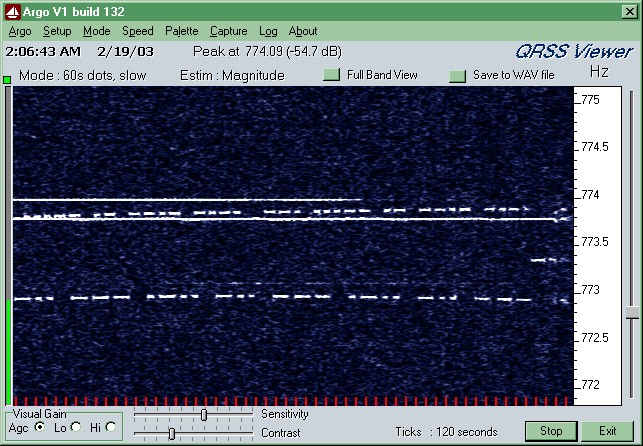
This capture shows Laurie G3AQC and Peter G3LDO going hammer-and-tongs trying to get captured by Laurence KL1X. Propagation as indicated by the DCF-39 monitoring was good but not the best (it has been 10dB+ better at peak, and more stable) but most importantly the storm-static was quite low; just eentsy-weentsy little lightning crashes can ruin a whole plot. When Laurie, then Peter, started up it was startling, and difficult to believe it was them until traces started to show signs of 'human intervention'. They remained solid, consistent and within a dB or so of each other until the tail end of the plot shown here (interestingly, their levels did not follow the degrees of excursion shown by DCF-39 at the same time; just a few hundred km. can make a big difference).
Near the end of the plot it looks like a third station tried to start up - this was captured by some other east-coast stations, John W1TAG and Denis W1WV, too, so it isn't a local artifact like my 'mystery meat' bogus 'Loran line' at '773.8-ish. (Turned out it was a false start from Brian, CT1DRP.)
There are two things that this session highlighted: Firstly, low QRN at the receive end is crucial. Obvious, but easily overlooked. Secondly, there was *TONS* of margin. Stations 10dB down or even quieter would still have been readily visible and copiable; from what I know of Laurie's setup, that implies those with *40 milliWatts e.r.p.* or even less. As a sort-of reference, the (for real) Loran line at (137)774.03Hz (773.98 indicated) was generally 6dB down on Peter and Laurie.
© Steve Dove, W3EEE, 2003

